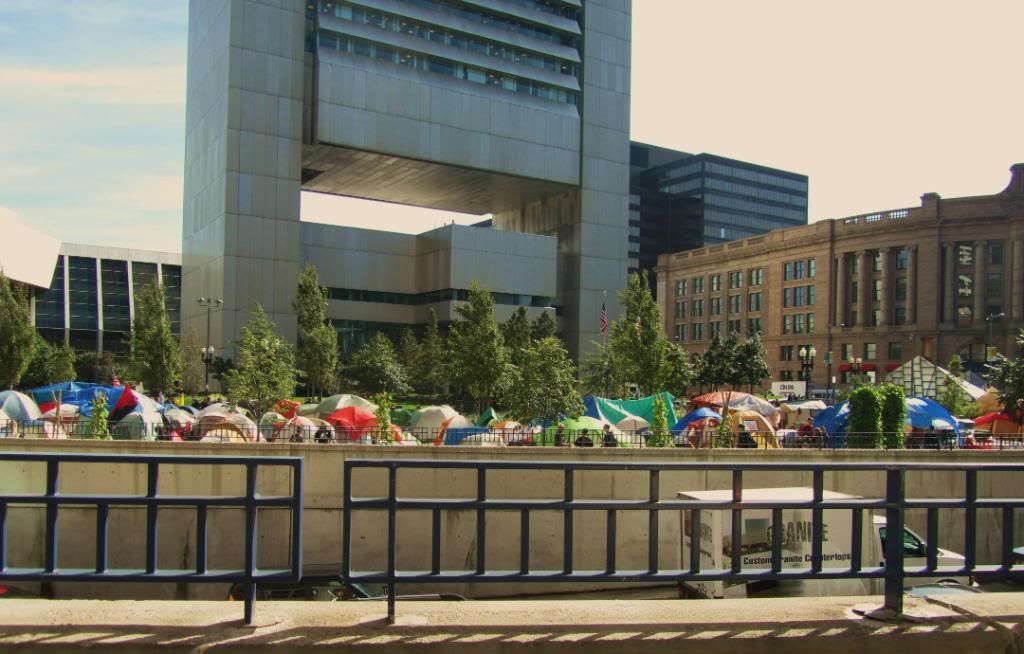whighlander
Senior Member
- Joined
- Aug 14, 2006
- Messages
- 7,812
- Reaction score
- 647
I mentioned a number of drawbacks to privately owned parks having a public easement as opposed to public parks:
1. Primary function of privately owned or managed park is usually aligned with the immediate commercial interest of the owner/abutter rather than serving a broader public interest.
2. Over-regulated due to fear of litigation and hyper-inflated safety concerns.
3. Passive and ornamental uses trump recreational / active uses.
Maybe someone can give me three examples of privately owned or managed parks with a public easement on which recreational / active uses are the predominate function of the park as opposed to ornamental landscaping and passive uses (e.g sitting and eating lunch).
I'm not suggesting parks like Post Office Square shouldn't exist. But I am suggesting that Riffleman's idea of privatizing the RKG would have negative consequences.
RKG will definitely improve in the future with increased density of users in the downtown and near proximity (Seaport).
Sicil -- usually the private parks are smaller and less amenable to active recreation than the larger public spaces. I will posit that the best example of active recreation on private spaces is university athletic fields being used for intramural and even more informal recreation. Of course you will argue, somewhat persuasively, that the university typically restricts non-university recreants on their property in the interest of security and safety. However, when it comes to passive recreation, university properties are typically open to the general public. Thus you can stroll under the big trees in the Haaahvd Yaaaahhhd or admire the obscurely erotic Moore and other modern sculpture littering the MIT grounds, or the grounds surrounding the Museum of Science or the Museum of Fine Arts, or the Mass Horticultural Society's 'Elm Bank" with quite a bit of impunity.
Post Office Square is no more restrictive to people having a pleasant al fresco lunch or afternoon chat than Boston Common and less so officially than the Public Garden.
Ultimately, only private ownership can insure the long-term commitment to protection of property -- because the owner -- owns it. In contrast -- public property is subject to the vagaries of local politics -- parks maintenance is typically one of the first expenses to be cut in times of financial challenges -- and one of the last services to be restored when the financial times improve.
Ultimately -- public parks suffer from what is known as the "The tragedy of the commons" in which multiple individuals, acting independently and rationally consulting their own self-interest, will ultimately deplete a shared limited resource, even when it is clear that it is not in anyone's long-term interest for this to happen. Thus most urban and many suburban and even rural parks suffer from vandalism, littering general decay -- particularly public restrooms, benches, tables and athletic facilities.
This problem was noted by Aristotle who wrote, of the polis of Athens: "That all persons call the same thing mine in the sense in which each does so may be a fine thing, but it is impracticable; or if the words are taken in the other sense, such a unity in no way conduces to harmony. And there is another objection to the proposal. For that which is common to the greatest number has the least care bestowed upon it. Every one thinks chiefly of his own, hardly at all of the common interest; and only when he is himself concerned as an individual. For besides other considerations, everybody is more inclined to neglect the duty which he expects another to fulfill; as in families many attendants are often less useful than a few." --- Aristotle (384 B.C.-322 B.C.), Politics, Book II, Chapter III.


